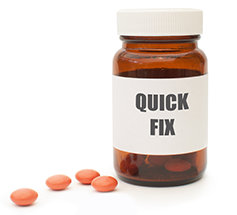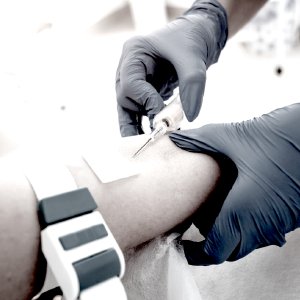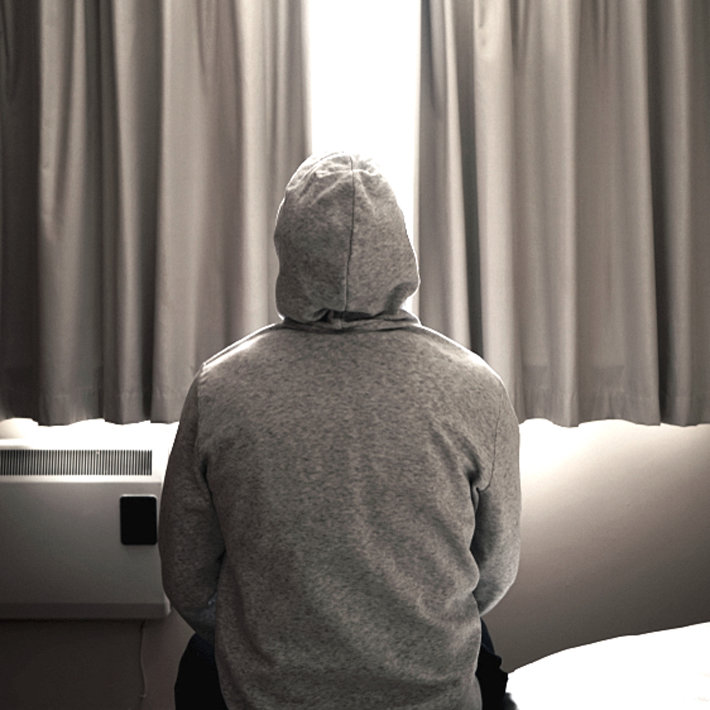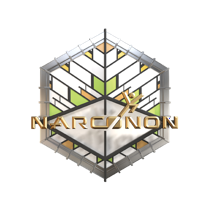There is No “Magic Pill” to Getting Clean from Drug Addiction

Drug addiction is no small habit, no simple affliction which can be easily remedied. Getting off of drugs and alcohol takes work, effort, time, commitment, and a powerful determination to get better. The logic here is that one didn’t become an addict overnight, so one is certainly not going to get clean overnight either.
We live in the United States, the land of the quick fixes and Band-Aid approaches. We have a pill for just about anything and everything, and our citizenry would rather opt to undergo risky elective surgery to fix a physical ailment than take a year of intensive physical therapy to fix that same ailment.
There is undoubtedly no simple “cure” for addiction, but it never ceases to amaze me how many “quick fixes” have cropped up over the decades in how we try to address addiction. The crazy thing is, we have a successful method for treating addition which works. It’s called residential drug and alcohol treatment. But many other techniques have been developed as addicts and their families continuously seek faster, easier, and cheaper methods of addressing life-risking habits.
Taking the Easy Way Out Never Works

In an attempt to “fix” addiction quickly, with minimal effort, and with minimal capital investment, the decades have brought us all kinds of different “treatment” methods. Medical experts and addiction “experts” throughout the ages have tried to find faster, easier, cheaper methods of treating addiction. They’ve ignored the simplicity and effectiveness of residential drug rehab, insisting that we “should be able to find something easier, cheaper, faster, etc.”
None of the alternative methods furnished have met with any real success. Here was what trying to take the “easy route” gave us:
- Harm Reduction. Harm reduction refers to a variety of efforts made to allow for drug use but to reduce the harm in drug use. A good example is safe injection sites—clinics where addicts can go to shoot up drugs in a monitored setting. If such addicts overdose, they are revived by medical technicians on site. Such sites may reduce the chances of overdose deaths, but they also allow for the continuation of addiction.
- Medication-Assisted Therapy. The idea behind medication-assisted therapy is to give “patient-addicts” a drug, usually methadone or buprenorphine, and then using that drug to help the addict escape withdrawal symptoms and cravings for their drug of choice. Medication-assisted therapy was the pharmaceutical industry’s “clever solution” (and a big money maker for them) for how the nation was going to “fix the addiction epidemic.” The problem is, the medications themselves are addictive and habit-forming. And they never address the critical issues of addiction that transcend far beyond the individual’s physical dependency on drugs.
- Outpatient Counseling. Outpatient counseling includes one-on-one sessions between a counselor and an addict. The idea behind this approach is for the counselor to help the addict find what might have caused them to become an addict in the first place, and to go from there. There is some value in this, but a therapist is extremely limited in what he or she can do for their patient. And if the therapist is not trained in addiction science, he and his patient will likely end up going down several rabbit holes. Furthermore, a therapist lacks the tools and resources needed to adequately address an addict's condition, resources which can only be found in a residential treatment setting.

- Group Meetings. Group meetings for treating addiction have been around since 1935 when Alcoholics Anonymous was founded. They may have been in use before that too, on an unofficial basis. I will contend that there is some limited value in meeting with a group of like-minded individuals and talking about one’s issues and sharing possible strategies for addressing those issues. But if people never avail themselves of correct drug treatment which includes withdrawal assistance, life skills training, the help of trained experts, and a direct, 24/7 focus on they’s habit which is free of the temptation of substances, one will likely never pull themselves out of the trap. While there are some who have found this route successful and many find comfort in the friendship and comfort found in the rooms, they still do not offer a viable alternative to proper residential treatment.
- Incarceration. This is the age-old, “War on Drugs” ideology. “We don’t know how to treat addicts, and they’re basically criminals anyway, so we may as well just lock them up.” Almost four decades of increases in drug abuse, increases in drug crime, and a bulging prison system has taught us that you can’t “fix” addicts by throwing them in jail.
- Aversion Therapy. Aversion therapy is one approach to addiction “treatment.” (I am not certain we can even call it treatment.) Aversion therapy seeks to “cure” people of alcoholism by chemically modifying their behavior. Such is facilitated by exposing the patient to the sight, taste, and smell of alcohol, and then immediately causing the patient to experience an unpleasant physical phenomenon, such as vomiting or mild nausea. We are human beings. We are not Pavlov’s dogs. An addiction transcends the physical and embodies the behavioral, psychological, and spiritual. We cannot “train away” addiction. Aversion therapy may only take two weeks or so, but it is a waste of time.
- Disease Theory. The disease theory states that addiction is a terminal, progressive brain disease from which one can never full recover. In this model it is believed that brain chemistry is permanently modified by drug use and based on genetic and environmental factors which cause both physical and mental dependence. The disease’s progression can only be prevented by cessation of the drug or a replacement of the substance being used along with additional chemical treatment to account for the now permanently damaged brain chemistry. Despite very little evidence and an incomplete understanding of how the brain works, this approach denies the spiritual, emotional and social component of addiction and insists that one can only be treated by medical “science” using chemical behavior modification and, while rare, electro convulsive shock therapy to “modify” the human brain. Unfortunately with the assistance of pharmaceutical companies and the intervention of medical personnel seeking familiar, quick and supposedly “evidence based” practices, we are seeing this quickly becoming the standard of care for addiction treatment.
Do any of these approaches sound at all pleasant? Do they seem effective? To me, they look incredibly pessimistic. Most of these approaches miss the mark entirely in addressing addiction. Others come close, but they don't create a sufficient environment that is conducive to growth and to resolving all of the facets and critical aspects of an addiction habit. And some, like disease theory, are just too skeptical that anything can be done about it to be effective.
Residential Addiction Treatment Offers a Lifetime of Betterment

A course through residential addiction treatment may take the most time and effort, but it offers the best results for someone who struggles with drug and alcohol addiction. To address and eradicate a crippling and toxic habit one has had for a while, it’s going to take some time. It’s going to take some effort. There is no “get out of jail free” card. There is no magic pill that one can take to overcome addiction.
When you look at an addict’s timeline, they did not become an addict overnight. I would add a remark about he user who just tried it once and then got emotionally or psychologically addicted. The use might appear to be overnight, but the underlying issues leading to the non-physical addiction were probably there for a long time and what needs to be addressed in a good thorough residential program. There was likely a lengthy timeline of events and experiences that led a person to the point of using drugs and alcohol to cope with their life struggles. There are many underlying issues, such as personal crises, time spent using drugs, trigger mechanisms, self-made destructive concepts and ideas, traps, and pitfalls built into an addiction habit. Residential treatment centers have always been the best environment for treating addiction for all these issues.
If you are seeking help for a family member or loved one who is struggling with addiction, or if you are seeking help for yourself, consider getting help through a residential treatment program. Better to get help the right way the first time and not make mistakes with short-term programs that don’t get to the real issues contained in the addiction.
Reviewed and Edited by Claire Pinelli, ICAADC, CCS, LADC, RAS, MCAP


